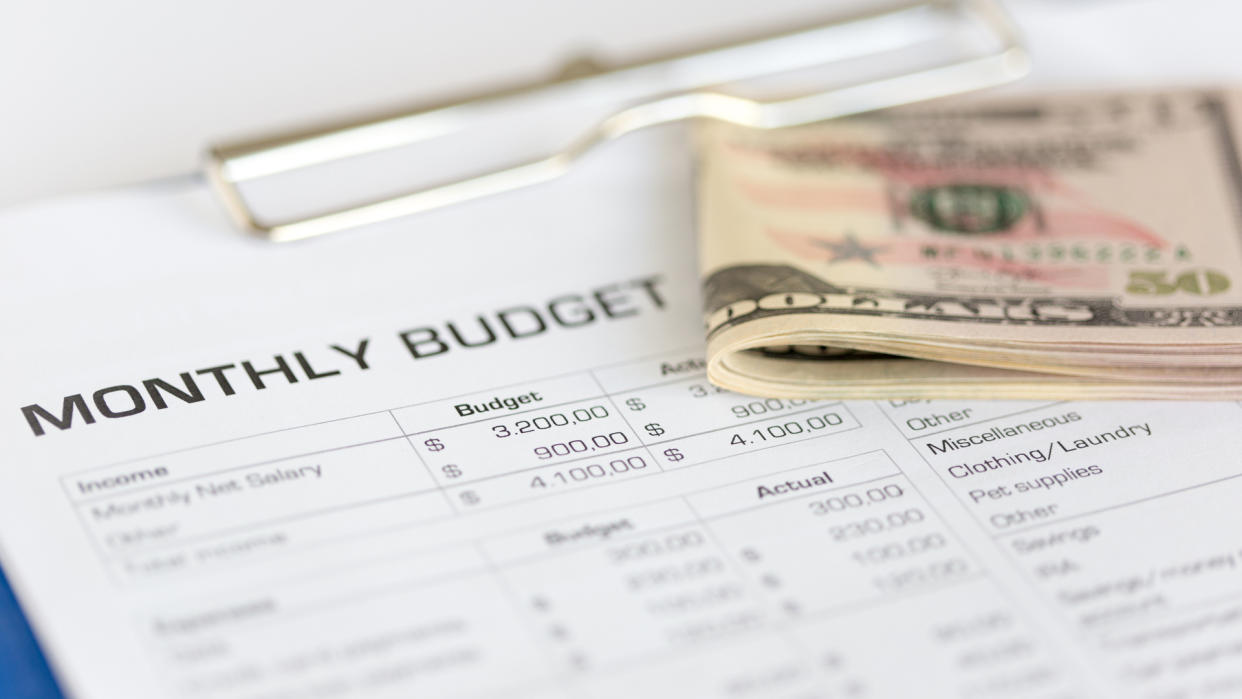How To Build and Maintain a Basic Monthly Budget

In its most basic form, a monthly budget tracks how much money you bring in and how much you have to spend on your needs. Whatever’s left over is yours to spend how you like or to save for the future.
Holiday Spending: Get Top Holiday Shopping and Savings Tips
Stimulus Checks: Mark These Dates on Your Calendar Now
Without one, you’re stuck guessing — and when it comes to personal finance, guessing is a sure ticket to overspending, undersaving and debt.
A budget is the foundation on which your entire financial life is based. Here’s how to create one that’s simple but effective.
Choose Your Strategy
When building a household budget, there are several strategies to choose from, but they all serve the same purpose — to create a spending plan based on your income, expenses and savings goals.
Take Our Poll: Where Have You Cut Back Most Because of Inflation?
Here’s a look at the most popular budgeting strategies.
50/20/30: This strategy requires you to dedicate 50% of your income to needs, 20% to savings and 30% to wants.
Zero-based budget: This strategy assigns a purpose to every dollar you earn until zero dollars are unaccounted for.
Pay yourself first: This method treats your savings goal as your most important “bill.” Pay yourself first, then pay your actual bills and other mandatory expenses.
Envelope budget: With this strategy, you’ll put money in envelopes — either physical cash or digitally with an app — that each represent different spending categories. When an envelope runs dry, you can’t spend anything more in that category — but you can carry over unspent money to the next month.
Values-based budget: With this system, you focus on spending only on the things that bring you joy, add value to your life or allow you to pursue your passions.
Choose Your Method
The simplest budgeting method that works for you is always best. For many people, that means following tried-and-true analog systems such as simple pen and paper, a spreadsheet or a dry-erase board that everyone in the family can see and alter when needed.
There’s nothing wrong with any of them, but you might find that one of the many available budgeting apps is a better fit for you. Here’s a look at some of the top software for household budgeting:
Mint: This highly rated free app syncs and unifies all of your various accounts, tracks your spending and automatically categorizes your expenses.
YNAB (You Need a Budget): One of the top zero-based budgeting apps, YNAB excels at helping users get out of debt and save money. But, at $14.99 a month or $98.99 a year, it’s among the pricier options.
Goodbudget: This app streamlines the budgeting process for anyone using the envelope system — and it lets you ditch the actual paper envelopes. It has a free version and a pro version for $8 a month or $70 a year.
PocketGuard: Built for people who have tendencies to overspend, PocketGuard focuses on simplified tracking. There’s a free version, or you can upgrade to PocketGuard Plus for $7.99 a month or $34.99 a year.
Adjust and Stick With It
No matter your method or strategy, your budget will be doomed to fail if you don’t build in flexibility. You must be able to adjust for things like:
Inflation or other price fluctuations
Holidays and other special times of the year
Saving for a specific purpose such as a car, house or vacation
Changes in income or taxes
If your budget is too inflexible, too complicated or too tedious, you won’t keep up with it — and the best budget of all is the one you stick with for life.
More From GOBankingRates
This article originally appeared on GOBankingRates.com: How To Build and Maintain a Basic Monthly Budget
